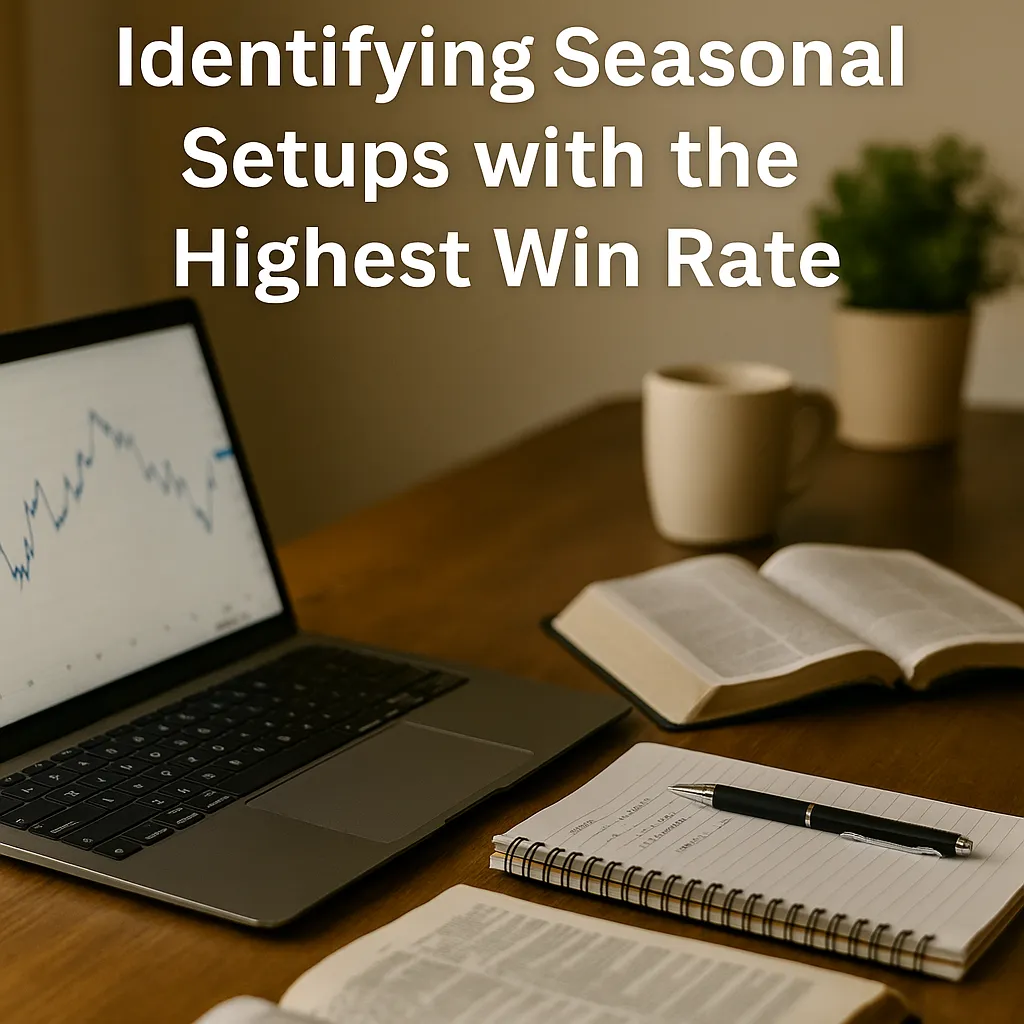
Identifying Seasonal Setups with the Highest Win Rate
Not every trade deserves your hard-earned money. Most investors learn the hard way that trading on hunches or hype leads to inconsistent results and unnecessary stress. The truth is, there are a handful of setups that deliver real results year after year, while the rest are just noise. Today, I want to show you exactly how I identify the trades that consistently offer the best odds for success. This is not about getting lucky. It is about doing your homework, trusting the data, and repeating what works. We will walk through the process, step by step, and finish with a real example you can use.
Why Seasonal Patterns Matter
If you have spent any time reading about the stock market, you have heard the phrase “history repeats itself.” Nowhere is this more true than with seasonal stock patterns. Certain industries and companies tend to outperform at predictable times each year. Retailers tend to do well in the winter holiday months. Travel stocks often see strength as summer approaches. Most new investors ignore these patterns. Instead, they chase whatever stock is getting attention online, rarely checking whether that stock has any real track record of outperformance in that season.
The result? Choppy, inconsistent returns and the feeling that the market is just “random.” The reality is, consistency comes from sticking with proven, repeatable patterns that have stood the test of time. It is not as exciting as jumping on the latest meme stock, but it works. And in this business, consistency beats excitement every time.
The Data-Driven Process for Finding High-Win-Rate Setups
Let’s define what I mean by “high win rate.” For me, a high-win-rate setup is one where a stock or ETF has shown a positive return during the same calendar month in at least 70 percent of the past 20 years. The more history, the better. This is not just about seeing a few good years in a row. I want to see a consistent pattern, over and over, regardless of what the overall market is doing.
Here is my basic process:
Find the Data
I use the Seasonality tool on TradingView. This lets me pull up a chart of monthly returns for any stock going back 10, 15, even 20 years. I look for months where the stock is green more than 70 percent of the time.Apply My Criteria
Win rate of 70 percent or higher during the target month.
Positive average return, not just a lot of small wins and one big loss.
At least 10 years of data. I prefer 20 if possible.
Stock trades at least $10 per share and has 1 million shares of daily volume.
Filter Out Pretenders
Some stocks look good until you check the actual numbers. Maybe they had one massive year that skews the data, or maybe the last three years have been a total reversal. I toss out any setup that does not pass the test above. It is not enough for a stock to have a “story” or to have done well once. I want reliability.
How to Identify the Right Stocks and Seasons
Each month, I repeat the same process. I start by pulling up my universe of stocks from the Growth Plan watchlist. I use the Seasonality tool to look at each stock’s performance during the coming month. I am not looking for what worked last year. I am looking for patterns that have worked, year after year, in that same window.
Industry differences matter. Retail stocks may shine in November and December, but tend to lag in early spring. Tech stocks often have seasonal rallies tied to product launches or end-of-year spending. Energy and industrials move on a completely different cycle. By focusing on these patterns, I let the calendar help narrow my focus.
One trap to avoid: assuming that just because something worked last year, it will work this year. This is why the long-term average matters. The more years a pattern holds up, the more confidence I have in putting real money behind it.
Real-World Example
Let’s put this into practice with a real example. Nike (NKE) is a stock that tends to get a lot of attention, but what does the data say? When I pull up NKE in TradingView’s Seasonality tool, I see that November has been a winning month in more than 80 percent of the past 20 years. The average return is positive, and there is no single outlier skewing the numbers. NKE tends to get a boost from holiday shopping and strong demand in the retail space.

Here is how I would approach this:
Check the Numbers: 80 percent win rate in November over 20 years, average return of more than 4 percent.
Confirm Liquidity: NKE trades more than 5 million shares a day and is well over the $10 threshold.
Set the Plan: I will look for opportunities to enter in late October or early November, aiming for a 3-5 percent gain with a stop loss of about 5 percent. If the pattern holds, the odds are on my side.
This is not about betting the farm on one trade. It is about stacking the odds every time I put on a new position.
Why This Approach Increases Consistency
I have tried both approaches. I’ve chased the “hot” stocks. I’ve also followed the high-win-rate seasonal setups. There is no comparison. When I follow the data, I see smoother results, fewer big drawdowns, and much less stress. The whole point is to put myself in the best position to succeed over and over, not just hope for a lucky break.
Someone always asks, “What if this year is different?” It is a fair question. No pattern works 100 percent of the time. That is why risk management is non-negotiable. But I would rather bet on what has worked 15 out of 20 years than roll the dice on a rumor or a “feeling.” The data is my anchor when things get uncertain.
The biggest benefit of this approach is peace of mind. I know exactly why I am taking each trade. I am not hoping or guessing. I am executing a repeatable process that has proven itself over time.
Takeaways and Next Steps
Here is how you can start finding the best setups:
Use data, not opinions, to filter your trades.
Look for win rates above 70 percent, positive average returns, and long histories.
Check for price and volume. Only trade liquid stocks.
Ignore hype. Stick to setups that pass your process.
Track your results so you can see your progress.
If you want to shortcut this process, I share my top 20 seasonal setups every month in the Growth Plan. Or if you want to dig deeper, the Beginner’s Guide to Seasonal Investing will walk you through everything step by step.



